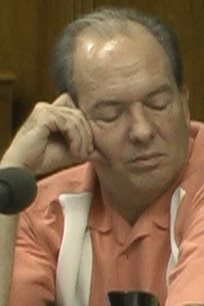Portsmouth and Chillicothe have a number of similarities. Both are medium-sized cities with about the same populations (in 2000, Portsmouth had 20,909, Chillicothe 21,796 residents). Both cities are county seats, Portsmouth of Scioto County and Chillicothe of Ross County. Both cities are located in a so-called rust belt state and both have seen better days. A manufacturing city and railroad hub, Portsmouth boasted of having the biggest shoe factories and largest railroad yards in the country. Portsmouth also touted a population of some 60,000, and at about that same time, seventy-five years ago, it had an NFL team, the Portsmouth Spartans. The center of an agricultural region, Chillicothe has a rich political heritage, and was twice the capital of Ohio, and before that the capital of the eastern part of the Northwest Territories. Both Portsmouth and Chillicothe have Mexican sister cities. Both have a mayor-council form of government, and both have tried and abandoned the city manager form of government. Both cities are trying to figure out how best to deal with the problems of the twenty-first century.
One of the problems both cities are trying to deal with is what to do with the older buildings that house their city governments. The decision both city governments have to make is whether to renovate their present city building, convert another building, or build a new building from scratch. Because this issue is so timely and so important, I will devote a whole article to it in my next posting.
Differences
If these are some of the similarities between Portsmouth and Chillicothe, what are some of the differences? To start with, in 2000, the median income for households in Portsmouth was $23,004, and the median income for households in Chillicothe $33,991. The household income in Portsmouth is more than a third less than it is in Chillicothe. That is a whopping discrepancy. As of July 2006, Scioto County, with a 7.3 percent unemployment rate, ranked 6th highest among Ohio’s 88 counties, and Ross County, with a 5.9 rate, ranked 30th. Ohio’s unemployment rate in July 2006 was 5.8 percent, so Ross County was about at the state average, while Scioto was about 1.5 above average. Studies have shown how crime, spousal abuse, divorce, and suicide rates rise alarmingly with each percentage point increase in the unemployment rate, which may explain why the social fabric in Portsmouth has become so frayed in the last half century as the economy of the river city has steadily gotten worse. Yes, Portsmouth once had a professional football team, but the Spartans have long since migrated to Detroit, where they were renamed the Lions. Portsmouth’s entry into a bush league, the Portsmouth Explorers, folded after a couple of seasons while the Chillicothe Paints are still going strong.
 Call it architectural consciousness, call it respect for tradition, call it whatever you want. Chillicothe has it, Portsmouth doesn’t. Chillicothe has saved its old city hall, built in 1874 and restored in 1957; the county courthouse (see inset) in historic downtown Chillicothe is currently conscientiously being restored. Downtown Chillicothe is an architectural treasure. Many of the most historic and beautiful buildings in Portsmouth have been torn down, while millions of dollars of public money has been poured into saving worthless ugly old department stores and former car dealerships (the Adelphia building) simply because they are owned by people with pull who have come to expect the government to bail them out. Every day I drive by the new county jail, smack in the middle of Portsmouth, with glistening razor barb wire, and I think of the magnificent railroad terminal that had been torn down to make way for the jail. As if there wasn’t empty land in the county for a new jail. If only Clayton Johnson or Neal Hatcher had had some financial interest in the terminal, then it probably would have been saved.
Call it architectural consciousness, call it respect for tradition, call it whatever you want. Chillicothe has it, Portsmouth doesn’t. Chillicothe has saved its old city hall, built in 1874 and restored in 1957; the county courthouse (see inset) in historic downtown Chillicothe is currently conscientiously being restored. Downtown Chillicothe is an architectural treasure. Many of the most historic and beautiful buildings in Portsmouth have been torn down, while millions of dollars of public money has been poured into saving worthless ugly old department stores and former car dealerships (the Adelphia building) simply because they are owned by people with pull who have come to expect the government to bail them out. Every day I drive by the new county jail, smack in the middle of Portsmouth, with glistening razor barb wire, and I think of the magnificent railroad terminal that had been torn down to make way for the jail. As if there wasn’t empty land in the county for a new jail. If only Clayton Johnson or Neal Hatcher had had some financial interest in the terminal, then it probably would have been saved.Comparing Crime in Portsmouth and Chillicothe
Even more than family income and unemployment statistics, even more than minor league baseball, even more than architecture, the contrasting crime rates in the two cities show that though they are only an hour’s drive from each other, Portsmouth and Chillicothe are otherwise worlds apart. The following chart shows how they compare with each other and with the nation in terms of crime:

Not surprisingly, given Portsmouth’s high crime rate, political corruption has been a problem for at least the last half century. A sentence in the online Wikipedia Encyclopedia says, “Portsmouth has not been immune to political corruption.” What an understatement. Not only has Portsmouth not been immune to political corruption, it has been plagued by it. Mainly through an agency called the Southern Ohio Growth Partnership (SOGP), a small clique controls Portsmouth. Though they have never held public office, two individuals in the clique, working as a team, the lawyer Clayton Johnson and the realtor-developer Neal Hatcher, dominate the politics of Portsmouth. They are a bipartisan team. Johnson is a Republican and Hatcher works both sides of the political street.
Tripping Out
Several months ago, on a beautiful summer day, Thursday July 6th to be exact, three senior citizens from Portsmouth drove up to Chillicothe, which is about an hour to the north. Route 23, the highway they drove up on, is the road that the Columbus Dispatch called the drug pipeline between the state capital and Portsmouth, the road on which not too long ago the young “stenographer” of Portsmouth City Councilman Mike Mearan was busted for possessing drugs while driving in a car rented by Mearan. Portsmouth is a city plagued by drugs, prostitution, unemployment, and political corruption, and so is a good place to get away from, if only for a day. The three seniors were Austin Leedom, who had worked as a deputy sheriff in Chillicothe some years ago; Richard Noel, who had been to Chillicothe a number of times for various reasons, including on business for the State of Ohio; and yours truly, a retired college professor who had been to Chillicothe at most a half dozen times in fifteen years but only to shop in the mall or on the outskirts of the city.
We were going to Chillicothe because all three of us are active in the political reform movement in Portsmouth and are members of the Concerned Citizens Group. We wanted to get a first-hand view of Chillicothe, what condition it was in and how its government operated. Before I visited Chillicothe, I had no impressions or preconceived notions about it. I knew little about Chillicothe’s past, except that it had been the state capital in the old days. I knew even less about its present condition. It was just the city with the curious name that I had driven by many times on my way to and from Columbus.
We hadn’t arranged any meetings in Chillicothe. We wanted to see how three strangers seeking information would be dealt with. We wanted to see what the spontaneous answers of people in the city government would be to our questions. But we began with the Chamber of Commerce. Because of my experiences with the Portsmouth Chamber of Commerce, which I now think of as the equivalent of a Mafia “social club,” I would not have made Chillicothe’s chamber of commerce our first stop, but Austin Leedom led us straight to the Ross County-Chillicothe Visitors Center, which shares space with the Chamber of Commerce on East Main St. We got direct answers to a number of questions. There was none of the narrow-eyed suspicion I was familiar with at the Portsmouth Chamber of Commerce.
From the Chamber of Commerce, we went to the Chillicothe Administration Building, on Paint St. The building looked very inadequate for a city its size. It doesn’t look like a city hall. It looks makeshift and temporary. When you enter, it seems cramped. But in contrast to the Portsmouth Municipal Building, everybody we talked to seemed alert and helpful. We were not in the Administration Building a few minutes before we all three had the sense we were not only in another city – we were on another planet. We couldn’t believe it. Were we dreaming? All three of us were used to the gloomy atmosphere and paranoia of those in Portsmouth’s Municipal Building, where because of a tradition of political corruption and a bad press, a bunker mentality seems to prevail. By contrast, in Chillicothe’s Administration Building, everybody seemed open and helpful.
Chillicothe Mayor
 The openness about budget matters was a big surprise. We were used to the budget being considered a secret, like the formula for Coke or for a Masonic ritual. A copy of the Chillicothe budget was always available on a table outside the auditor’s office. You didn’t even have to ask for it, and get the runaround, as you do in Portsmouth. We talked to the city auditor, William Morrissey, a Republican, and also to Mayor Joseph Sulzer (shown here), a Democrat, both of whom have the education and experience, not to mention intelligence and articulateness, to justify the important positions they held. In Portsmouth, unfortunately, it seems that it is mainly the unsuccessful, the unscrupulous, and the un-indicted who gravitate toward city government.
The openness about budget matters was a big surprise. We were used to the budget being considered a secret, like the formula for Coke or for a Masonic ritual. A copy of the Chillicothe budget was always available on a table outside the auditor’s office. You didn’t even have to ask for it, and get the runaround, as you do in Portsmouth. We talked to the city auditor, William Morrissey, a Republican, and also to Mayor Joseph Sulzer (shown here), a Democrat, both of whom have the education and experience, not to mention intelligence and articulateness, to justify the important positions they held. In Portsmouth, unfortunately, it seems that it is mainly the unsuccessful, the unscrupulous, and the un-indicted who gravitate toward city government.
Austin returned to Chillicothe on July 10th, just four days after our July 6th visit, to attend a Chillicothe city council meeting. He told me that while there was debate and differences of opinions expressed at the council meeting, it was much more businesslike and non-confrontational than Portsmouth’s council meetings. It was all very professional, he told me, and so were the members of the Chillicothe City Council, including council President Robert Shoultz. Austin told me he talked afterwards to Shoultz about the two-year terms for council members. Chillicothe council members have two-year terms, Portsmouth city council members four-year terms. Portsmouth Council President Howard Baughman thought anything less that four years would create chaos, because, he said, it takes at least four years for council members to learn the ropes. Shoultz thought two-year terms made more sense, because voters could get rid of a council member by going to the polls every two years. They didn’t have to resort to the costly and troublesome recall process that is the alternative under the four-year system.
I figured I would see the Chillicothe City Council in action for myself, so I drove up for the Monday September 25th meeting. Austin was right. For anyone used to city council meetings in Portsmouth, it was hard to believe. I got there early, almost a half hour before the meeting, but most members of the city government were already in the chamber, some in their seats. In Portsmouth, prior to the city council meeting, members usually meet for a half hour behind closed doors in the adjoining office of City Clerk Jo  Ann Aeh, who was once officially found guilty by the state of mutilating recall petitions. The little get-togethers in her office beforehand are the real meetings, where deals are struck and strategies devised. Only councilman Bob Mollette will not take part in these closed-door shenanigans. When videographer Joe Ferguson opened the closed door and tried to take footage of one of these rump meetings, councilman Marty Mohr defiantly mugged for Joe’s camera (see insert), with Council President Howard Baughman smirking in the background, providing us with a candid, unscripted example of the real attitude of most Portsmouth politicians toward the voters. Incidentally, Mohr is the same councilman who nearly caused a riot at one meeting when he angrily denounced people in the audience as being “crap” for spreading rumors on the internet about his alleged adulterous behavior.
Ann Aeh, who was once officially found guilty by the state of mutilating recall petitions. The little get-togethers in her office beforehand are the real meetings, where deals are struck and strategies devised. Only councilman Bob Mollette will not take part in these closed-door shenanigans. When videographer Joe Ferguson opened the closed door and tried to take footage of one of these rump meetings, councilman Marty Mohr defiantly mugged for Joe’s camera (see insert), with Council President Howard Baughman smirking in the background, providing us with a candid, unscripted example of the real attitude of most Portsmouth politicians toward the voters. Incidentally, Mohr is the same councilman who nearly caused a riot at one meeting when he angrily denounced people in the audience as being “crap” for spreading rumors on the internet about his alleged adulterous behavior. “Take Me to Your Leader”
 I asked Austin Leedom recently if he had to sum up his overall impression of Chillicothe in one word, what would it be. He said, “Openness!” When I compare the secretiveness and skullduggery of Portsmouth’s city government with the openness of Chillicothe’s, I am embarrassed for our city. To compare just the mayors of the two cities is to see why, as I said earlier, we felt not just that we were in another city but that we were on another planet. If a spaceship landed in Portsmouth and aliens told me, “Take us to your leader,” I might have to tell them, “I’m sorry. He isn’t here. He just drove over to Kentucky in his city car to buy lottery tickets.” I couldn’t possibly begin to make the aliens understand how uncomfortable Portsmouth's mayor Jim Kalb (shown here) felt driving to Kentucky in his little economy city car because what a public official of his importance should be driving is a new S.U.V. That's what he said at a council meeting.
I asked Austin Leedom recently if he had to sum up his overall impression of Chillicothe in one word, what would it be. He said, “Openness!” When I compare the secretiveness and skullduggery of Portsmouth’s city government with the openness of Chillicothe’s, I am embarrassed for our city. To compare just the mayors of the two cities is to see why, as I said earlier, we felt not just that we were in another city but that we were on another planet. If a spaceship landed in Portsmouth and aliens told me, “Take us to your leader,” I might have to tell them, “I’m sorry. He isn’t here. He just drove over to Kentucky in his city car to buy lottery tickets.” I couldn’t possibly begin to make the aliens understand how uncomfortable Portsmouth's mayor Jim Kalb (shown here) felt driving to Kentucky in his little economy city car because what a public official of his importance should be driving is a new S.U.V. That's what he said at a council meeting.
What my recent visits to Chillicothe did for me was serve as a reminder that what is going on in Portsmouth and Washington D.C. is not what’s going on everywhere else in the country. That Chillicothe is not perfect goes without saying. I know there are citizens who disagree with some policies and actions of their city government. But corruption, incompetence, and pork barreling have not become the norm in Chillicothe, as they have in Portsmouth. The two cities are alike in many ways, like twins, municipally speaking, but Portsmouth is the evil twin. City government in Chillicothe is of, by, and for the people, but in Portsmouth city government is of, by, and for a clique of crooks. By following Chillicothe’s example, Portsmouth could begin to climb out of the pit that it has dug itself into in the last half century, but not as long as it is controlled by crooks.
 Call it architectural consciousness, call it respect for tradition, call it whatever you want.
Call it architectural consciousness, call it respect for tradition, call it whatever you want.  The openness about budget matters was a big surprise. We were used to the budget being considered a secret, like the formula for Coke or for a Masonic ritual. A copy of the
The openness about budget matters was a big surprise. We were used to the budget being considered a secret, like the formula for Coke or for a Masonic ritual. A copy of the  Ann Aeh, who was once officially found guilty by the state of mutilating recall petitions. The little get-togethers in her office beforehand are the real meetings, where deals are struck and strategies devised. Only councilman Bob Mollette will not take part in these closed-door shenanigans. When videographer Joe Ferguson opened the closed door and tried to take footage of one of these rump meetings, councilman Marty Mohr defiantly mugged for Joe’s camera (see insert), with Council President Howard Baughman smirking in the background, providing us with a candid, unscripted example of the real attitude of most
Ann Aeh, who was once officially found guilty by the state of mutilating recall petitions. The little get-togethers in her office beforehand are the real meetings, where deals are struck and strategies devised. Only councilman Bob Mollette will not take part in these closed-door shenanigans. When videographer Joe Ferguson opened the closed door and tried to take footage of one of these rump meetings, councilman Marty Mohr defiantly mugged for Joe’s camera (see insert), with Council President Howard Baughman smirking in the background, providing us with a candid, unscripted example of the real attitude of most  I asked Austin Leedom recently if he had to sum up his overall impression of
I asked Austin Leedom recently if he had to sum up his overall impression of 


















